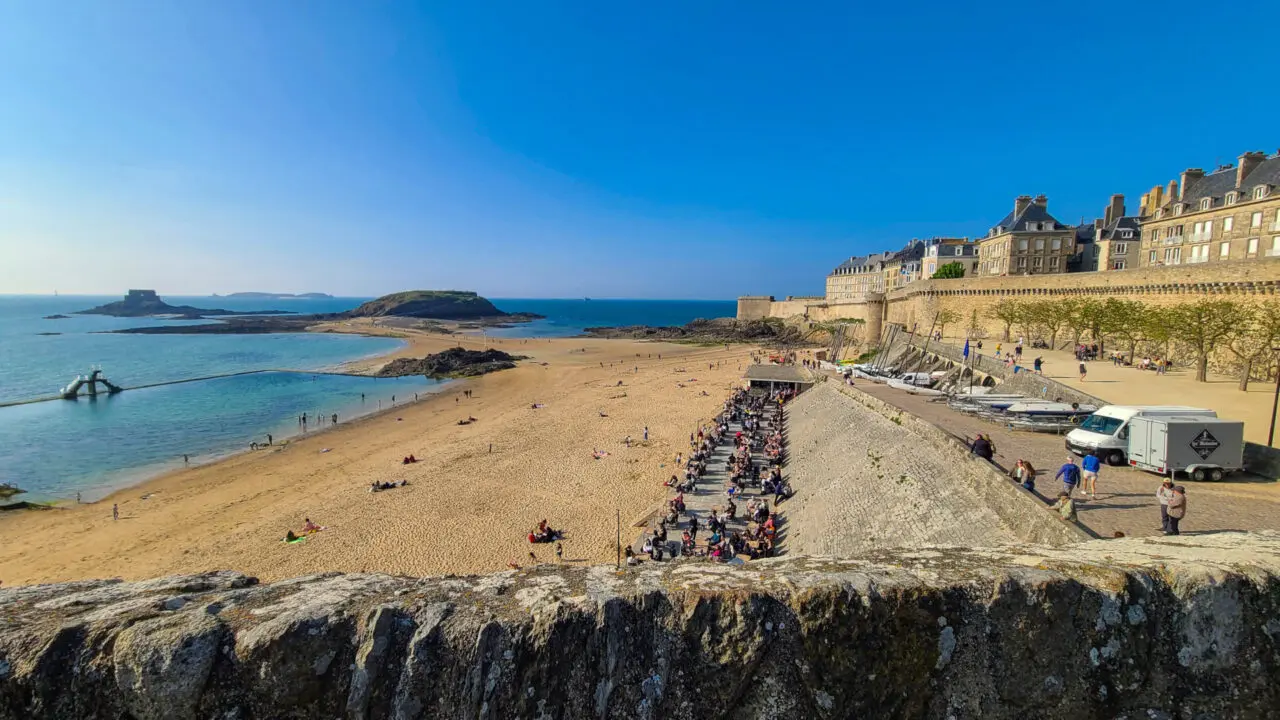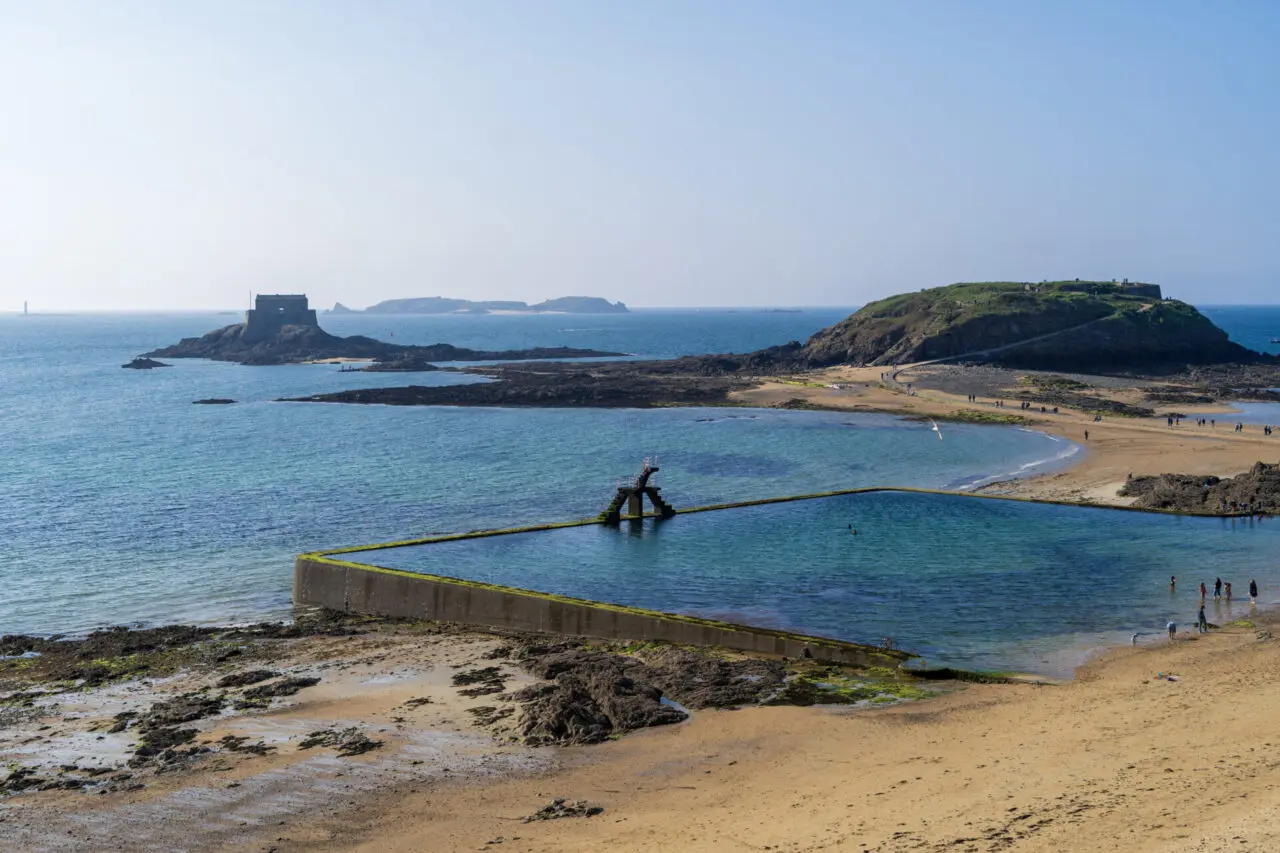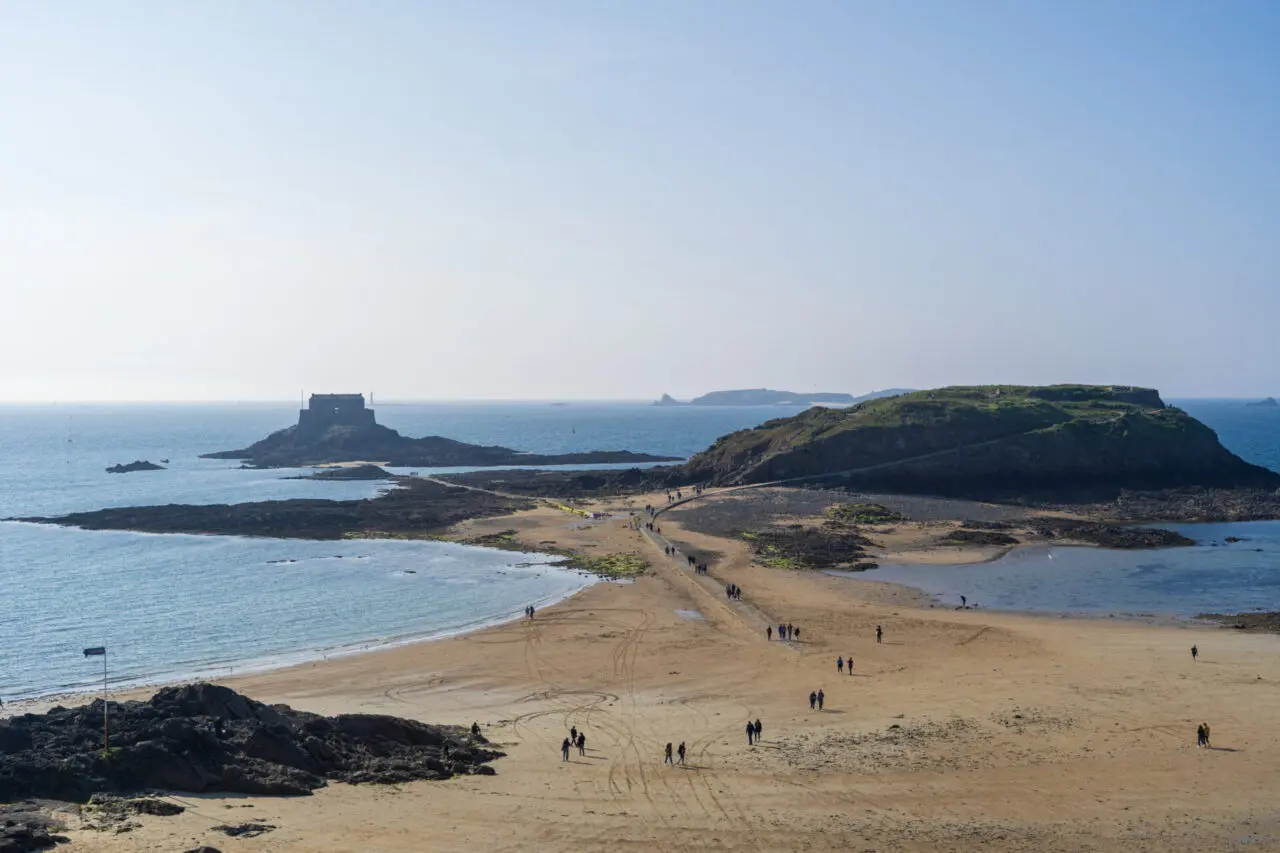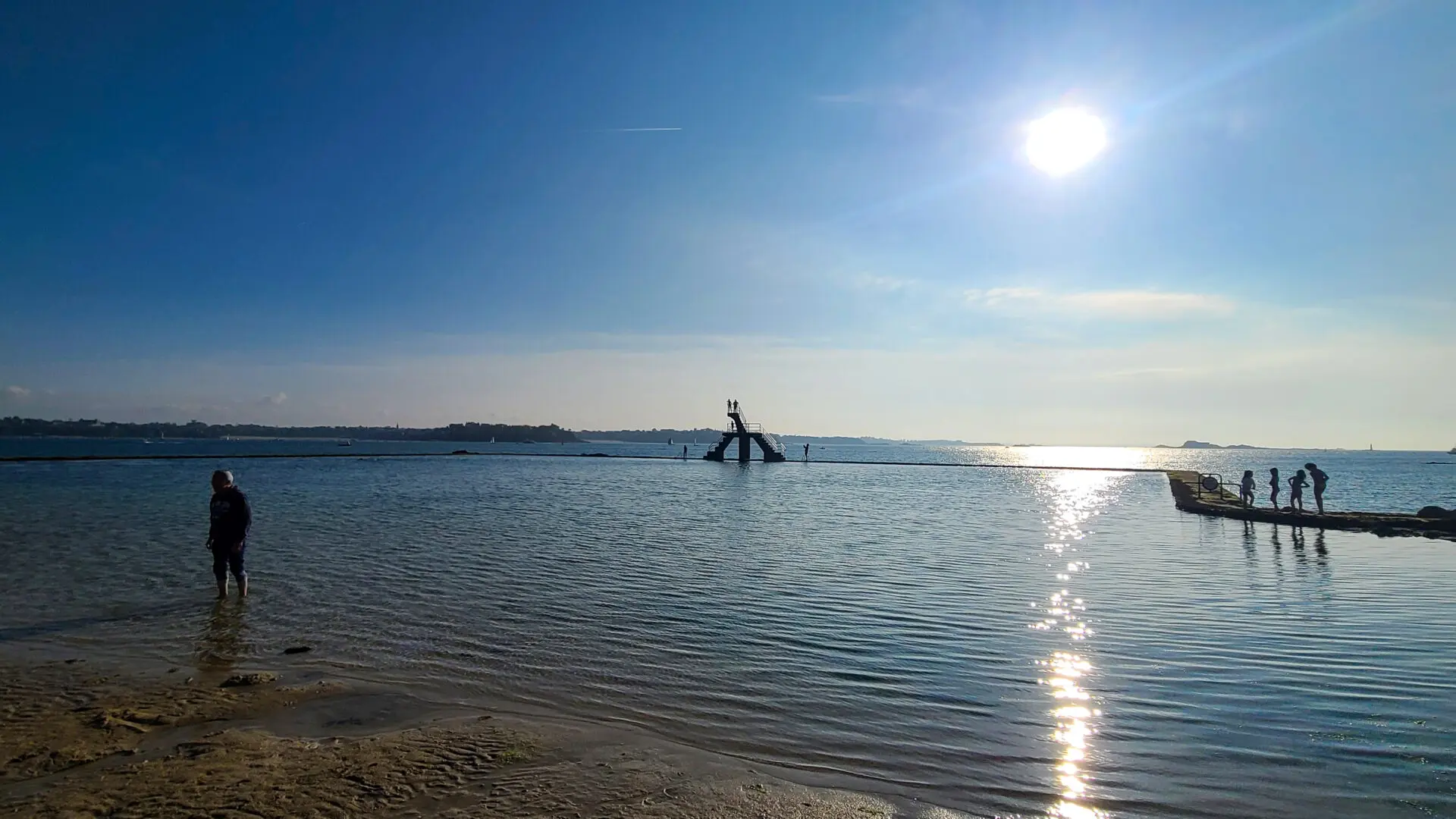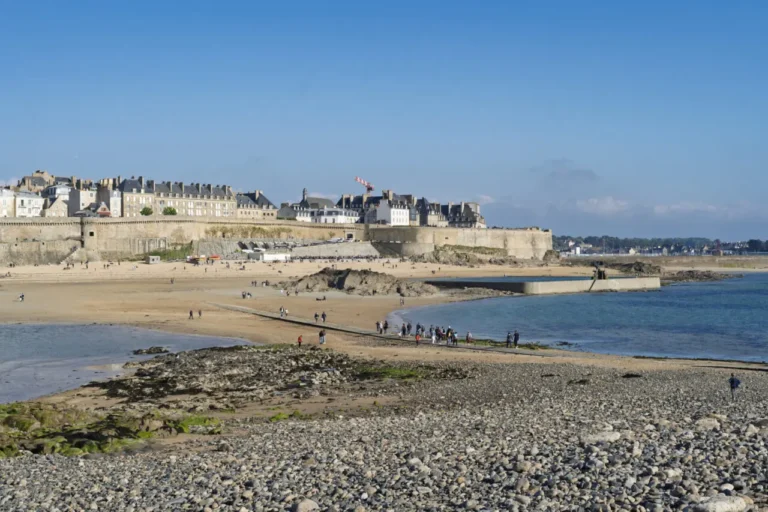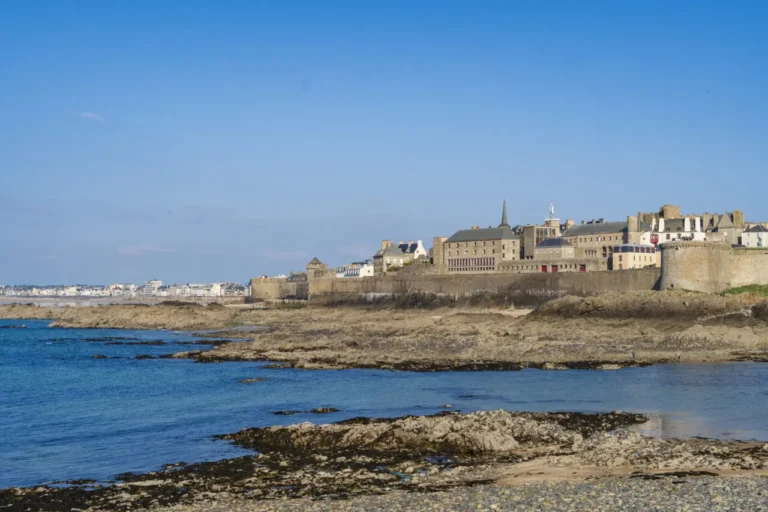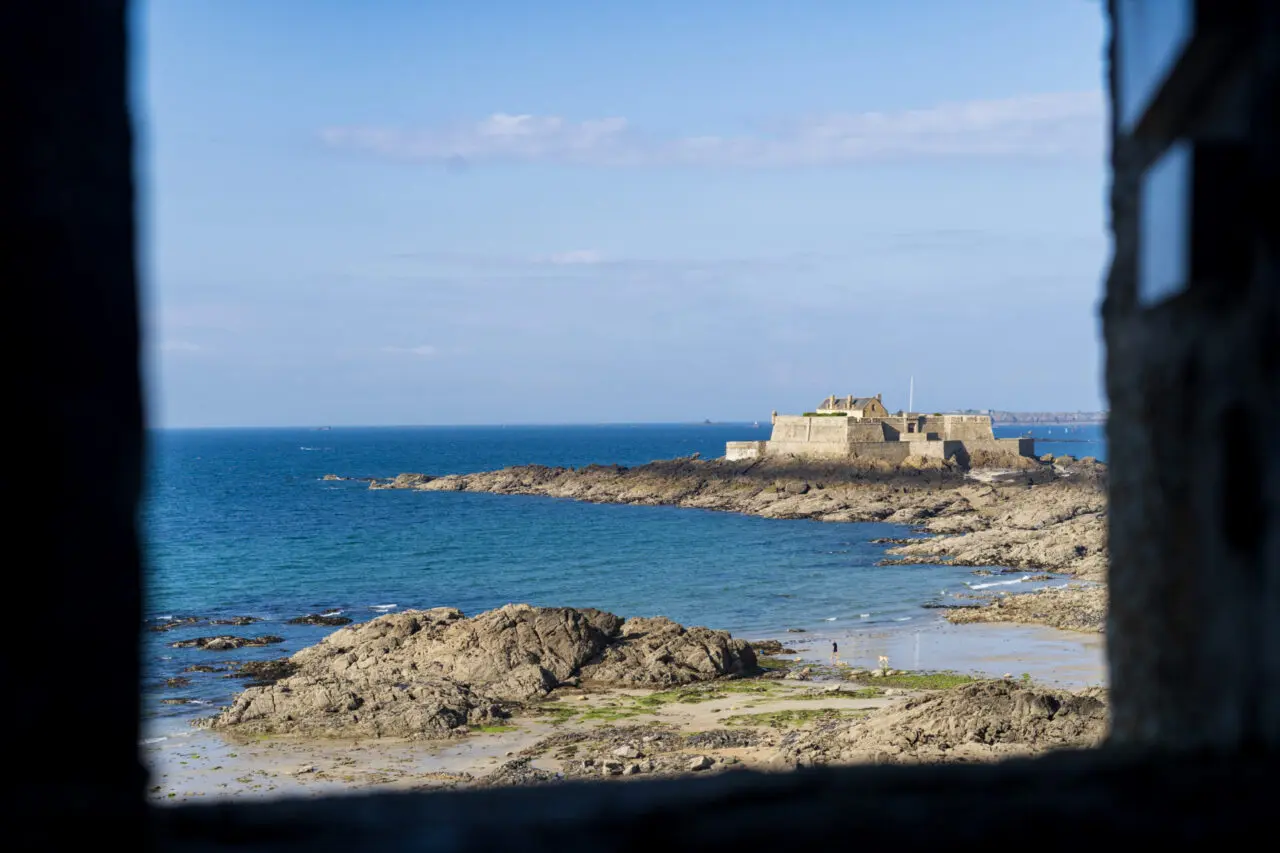Saint-Malo. The name rings a bell, but where have I heard it before? While planning our Mont-Saint-Michel adventure, this coastal town kept popping up nearby. “I swear I know this name,” I told my girlfriend, scratching my head. She laughed and pointed out we’d probably seen it at the grocery store—apparently half the dairy products in France slap “Saint-Malo” on their labels. Makes perfect sense, actually. Brittany churns out tons of dairy, and I’m pretty sure every yogurt cup and milk dessert we’d grabbed had this name stamped somewhere.
Since it felt familiar (even if just from shopping), why not check it out? We bundled it into a perfect 2-3 day regional escape with Mont-Saint-Michel, Cancale, Dinard, Dinan, and Mont-Dol. A much-needed breather from our base in Lannion, just a couple hours’ drive away.
Turns out Saint-Malo was basically Pirate Central. Well, technically it was home to corsairs—pirates with fancy government licenses. Think of them as freelance naval contractors: they’d raid enemy ships with the king’s blessing, then dutifully hand over a cut of the loot. Pretty sweet deal, if you ask me. Maybe because so many sword-wielding seafarers called this place home, the entire city is wrapped in massive stone walls. They loved dishing out trouble but clearly weren’t keen on receiving it.
The waters here are part of Mont-Saint-Michel Bay, famous for its absolutely insane tidal swings. When the tide rolls out, it reveals walking paths to nearby islands like some kind of Moses-level magic. The two main spots are Grand Bé and Petit Bé—which literally translate to “Big Island” and “Little Island” in the local Breton dialect. Not exactly winning any creativity awards, but hey, it gets the job done.
1. Conquering the Saint-Malo Ramparts
First mission: parking. Because we drove, and because this is France, everything costs money. Despite being a decent-sized town with what should be plenty of space, every single spot demands euros. Being a legitimate tourist magnet in France and beyond, cars constantly stream in and out. We ended up in some outdoor lot beyond the fortress walls—roughly 2 euros per hour, if memory serves. For a place with this much real estate, they sure know how to squeeze tourists dry.
Once parked, we dove into the walled city. From the outside, it screams “medieval fortress,” and the narrow cobblestone streets inside deliver on that promise. But it’s not the Instagram-pretty Parisian medieval vibe—this feels grittier, more functional. It’s also different from the distinctive Breton stone architecture I’d seen in Lannion or Perros-Guirec. You get the sense that flush pirates put serious money into construction, but it still couldn’t quite match the capital’s sophistication.
The city streets weren’t our main target anyway—we were here for those legendary walls.
Thanks to the ridiculously pleasant climate, the place was crawling with walkers and sightseers. The rampart walkway was so packed it bordered on uncomfortable. This region stays wonderfully mild year-round: cozy winters, refreshing summers. Seriously enviable weather—I’d kill for Korea to have this climate.
Peering down at the beach below, it was absolutely heaving with people. This is Plage de Bon-Secours, famous for its natural seawater pool created by the tides and that dramatic 5-meter diving platform perched at the edge.
Being mid-morning and not quite warm enough yet, the tidal pool sat mostly empty. Even with this famously mild climate, blazing sunny days like this are relatively rare gems, so everyone seemed to be making the most of the vitamin D opportunity.
In the distance, Grand Bé and Petit Bé come into view—our “Big Island” and “Little Island.” The one on the right is Grand Bé; the left one with that chunky concrete structure is Petit Bé. We hadn’t timed this specifically, but luck was on our side—the tidal pathway was wide open. More on these mysterious islands in a bit.
Getting closer, I could see seawater flanking both sides of the stone path. There’s this solid walkway cutting straight through the middle, and I found myself genuinely curious about what it looks like when the tide rushes back in. How high does all that water actually get?
Looking toward the much narrower path to Petit Bé, I spotted several people gearing up for the trek. That route looks significantly trickier—definitely not somewhere you’d want to get caught when the ocean decides to reclaim its territory.
The weather was so crystal clear we could see all the way across to Dinard’s yacht marina—Mouillage de Dinard. Clearly where the wealthy folks come to play with their floating toys.
After completing our rampart circuit, we headed down to beach level. What you’re seeing in the photo isn’t just any old wall—there’s serious history here.
Local residents first threw up these defenses around the 12th century to keep pirates at bay. The irony? State-sanctioned pirates (those corsairs I mentioned) later made this their headquarters and beefed up the fortifications even more. During the French Revolution and Napoleonic Wars, they built those coastal defense fortresses on Petit Bé and Grand Bé specifically to give the British navy a hard time.
Fast-forward to World War II: when Allied and American bombers went after the German occupiers, they flattened 80% of the city. These walls? Didn’t even flinch. Now that’s what I call legendary construction.
2. The Tidal Pool and That Insane Diving Board
The beach goes by Plage de Bon-Secours, and its star attraction is the “Piscine d’eau de mer de la plage Bon-Secours”—which sounds infinitely more sophisticated in French but basically means “seawater swimming pool.” Sometimes fancy language really does make everything sound better.
Despite weather that would make most sane people think twice about getting wet, this fearless crew had climbed up to the diving board. I genuinely admire that kind of life enthusiasm—I wish I had even a quarter of their spontaneous courage.
From their silhouettes, they look like kids, which somehow makes it even more impressive. That platform towers 5 meters above the water, with depths of about 3-4 meters below—plenty deep enough to avoid any head-cracking disasters.
Let me score this dive: Takeoff gets an 8, Flight earns a solid 9.5, Form deserves an 8.5, Rotation & Twists manage a 6, Entry pulls a strong 9. But courage? Pure courage gets a perfect 10!
3. The Chosen Islands: Grand Bé and Petit Bé
Time for our island adventure. Mudflats stretch out on both sides, with this ancient stone causeway cutting straight down the middle. Sure, it’s only accessible at low tide (very “chosen ones only”), but the window stays open for hours. We leisurely finished our wall-walking and strolled across without any drama. I imagine they start restricting access when the tide turns, though this being France—land of personal responsibility and national swimming obsession—maybe they just trust people to figure it out themselves.
This Grand Bé has served as a strategic lookout since the 17th century, then got the full fortress treatment in the 18th century when British invasion seemed likely. Up on that hill sits the tomb of French writer François-René de Chateaubriand, famous for works like “Atala,” “René,” and “Memoirs from Beyond the Grave.” I’ll be honest—I’m not familiar with his literary masterpieces. The only Chateaubriand I know comes with a side of béarnaise sauce.
Pro tip: I’ll drop a link to Saint-Malo’s tide schedule because you might not get as lucky as we did. Though I bet watching these islands surrounded by water has its own romantic appeal.
Standing on Grand Bé and looking back at Saint-Malo, it’s crystal clear why this place proved nearly impossible to conquer. Those walls look intimidating even at low tide—imagine trying to assault them at high tide when ships would have to pull right up to the ramparts. Even Korea’s legendary Admiral Yi Sun-sin might have thought twice about this one.
Nature’s thriving here too. During our walk across, the mudflats on both sides were teeming with mussels, barnacles, and other marine life. We even spotted families harvesting shellfish. Funny thing though—while mussels are considered pretty premium in France, the locals barely gave them a second glance. The French definitely aren’t known for their foraging instincts.
We didn’t make it to Petit Bé, though apparently it’s partially restored and offers guided tours.
This smaller island is another 17th-century military fortress, all designed by some guy named Vauban. That modest patch of land supports this massive concrete structure—a stark reminder of just how terrifying warfare can be.
4. Harry Potter Merchandise and Lunch
Maybe the whole medieval fortress vibe meshes perfectly with magical worlds, but there’s this gift shop called Mystère & Cie that’s absolutely loaded with Harry Potter gear.
There’s some story floating around that J.K. Rowling vacationed here as a kid and drew inspiration from Saint-Malo, though I’m pretty skeptical. Feels like they’re really reaching to make that connection work. The shop doesn’t exclusively sell Potter merchandise, but it definitely dominates the inventory. The randomness factor alone made us poke around. Honestly, given the whole pirate theme, wouldn’t “Pirates of the Caribbean” stuff make way more sense?
We grabbed lunch inside the old city. Looks like the restaurant changed names and chefs since our visit, but it’s currently called L’Armateur—77 reviews, perfect 5.0 stars. Standard French restaurant pricing at around 30-40 euros per person. We went with one appetizer, two mains, one dessert, and drinks.
The foie gras absolutely demolished anything I’d tried in Paris. My girlfriend tackled what looked like cod or some other white fish, while I predictably went for meat. Dessert was this bread-like creation served with salted caramel for dipping, topped with cream—decadent stuff.
5. Final Thoughts
Everything felt perfectly peaceful that day thanks to gorgeous weather, but apparently when the wind picks up, waves crash against these ramparts with enough force to splash into the city streets. That would be pretty atmospheric, but also legitimately dangerous. Getting sick abroad makes hospital visits a real headache—learned that lesson the hard way after a nasty encounter with chiggers. (Not in Saint-Malo, thankfully.)
For a small coastal town supposedly living in Mont-Saint-Michel’s shadow, the tourist crowds suggest it’s already plenty famous worldwide. As a self-proclaimed pirate city, I was secretly hoping for displays of medieval ships or maybe some shipwrecks, but I guess I’ve been watching too many movies.
Still, those ramparts that stubbornly survived World War II, the exclusive tidal islands accessible only to the properly timed, and that natural seawater pool with its gravity-defying diving board genuinely moved me. It’s a magical place. If you ever get the chance, absolutely make the trip.


